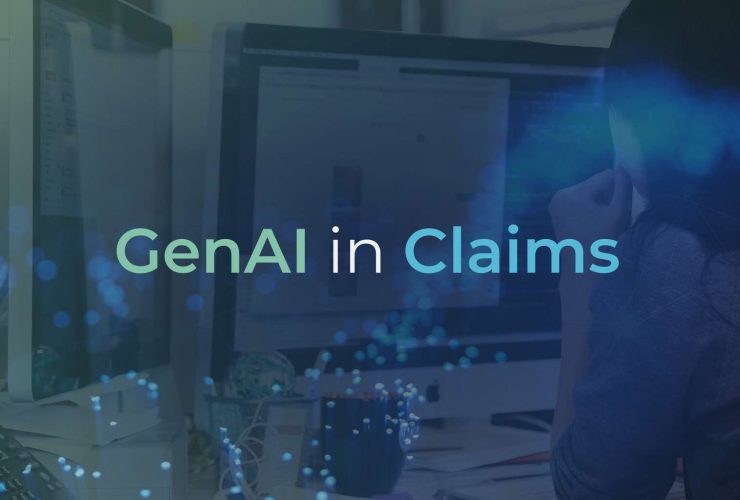From Data Silos to Data Strategy
How to Build a Platform Ready for AI
Every organisation wants to “do AI”.
But few are ready for it.
The problem is not a lack of algorithms or ambition. It is data.
Specifically, data that is trapped, fragmented, and inconsistent across systems, departments and formats.
These silos do not just block AI progress. They block business progress.
And in 2025, the organisations winning with AI are not those buying more tools.
They are the ones building data foundations strong enough to support intelligence.
The Data Silo Dilemma
Over the years, insurers, banks, and enterprises have accumulated hundreds of systems and each with its own data structure, rules and integrations.
The result:
- Policy data stored in one system.
- Claims, risk, and finance data in others.
- Customer data duplicated across CRMs, spreadsheets, and legacy databases.
Each system makes sense in isolation, but together, they create noise, not insight.
When AI enters this environment, it faces chaos.
Data engineers spend months cleaning, moving and reconciling , thetime that should be spent building models, not fixing spreadsheets.
As a McKinsey report put it:
“70% of an organisation’s AI effort is spent on data preparation, not innovation.”
(McKinsey, “The Data-Driven Enterprise of 2025)
Why AI Starts With Data Strategy and Not AI Models
AI is only as good as the data feeding it.
Without a coherent data strategy, AI will replicate your organisation’s data silos faster and at scale.
That means biased decisions, incomplete insights, and compliance nightmares.
A true data strategy aligns business goals with data architecture. It answers questions like:
- What business outcomes do we want AI to improve?
- Where does relevant data live today?
- How will we ensure quality, lineage, and governance?
- How will we scale securely across regions and regulations?
Only once those foundations are in place can AI deliver measurable, explainable impact.
The Modern Data Platform: Foundation for AI
Building a platform ready for AI means unifying storage, processing, and governance without losing agility.
The architecture that enables this is the Lakehouse and a model that merges the best of data lakes and warehouses.
At The Data Company, we have seen insurers and financial firms transform their operations by adopting Lakehouse architectures built for AI.
Here iss what makes them work:
- Unified Data Foundation
All data types including structured (policies, transactions), semi-structured (JSON, IoT), and unstructured (emails, PDFs, images) are stored and accessible in one governed environment.
This eliminates the need for multiple data copies across silos.
- Built-in Governance and Lineage
Every dataset carries metadata, versioning and access control.
When regulators ask, “Where did this insight come from?”, the answer is traceable in seconds.
- Real-Time Data Streaming
AI thrives on fresh data.
Modern data platforms connect live streams from claims systems, CRM, IoT sensors, or social feeds enabling real-time decisioning and automation.
- Interoperability and Scalability
The Lakehouse is cloud-agnostic, API-ready and compatible with multiple analytics and AI frameworks (Databricks, Snowflake, Azure, etc.).
It scales elastically and is essential for high-volume, data-rich industries like insurance or banking.
- Embedded AI/ML Workflows
Data scientists can develop, train and deploy models directly within the platform and no more moving data between isolated environments.
This reduces friction, speeds experimentation, and improves compliance.
Migrating From Legacy Systems to Modern Data Platforms
For most insurers and financial institutions, the first challenge is migration.
Legacy systems are not built for AI. They store data in outdated formats, lack APIs and can’t handle large-scale analytics.
That’s where The Data Company’s Data Migration Framework delivers measurable value.
Our methodology ensures:
- End-to-end system conversion or partial book-of-business migrations
- Preservation of historical records (renewals, MTAs, cancellations)
- Integration of risk, claims, and document data with modern architectures
By modernising your data environment, you make every downstream AI initiative faster, cheaper, and safer.
The Roadmap to an AI-Ready Data Platform
| Stage | Focus | Outcome |
| 1. Assess | Audit current systems, silos, and business goals | Clear view of where data lives and what it serves |
| 2. Architect | Define Lakehouse design and governance model | Blueprint for unified, scalable data operations |
| 3. Migrate | Move legacy data with minimal disruption | Modernised data estate ready for analytics |
| 4. Activate | Build pipelines for ingestion, transformation and real-time use | Data becomes accessible and trustworthy |
| 5. Optimise | Embed AI/ML workflows and dashboards | Actionable insights drive measurable ROI |
From Silos to Strategy: The Business Impact
A modern data strategy isn’t just a technology upgrade, it is a performance multiplier.
With a unified data platform, organisations can:
- Reduce operational inefficiency by 30–50%
- Accelerate AI deployment by 3–5X
- Enhance fraud detection, underwriting, and customer analytics
- Meet compliance and ESG reporting requirements automatically
As Gartner predicts, by 2026, organisations will abandon 60% of AI projects unsupported by AI-ready data.
This underscores the importance of transforming data silos and building a robust data platform, so your organisation is ready for AI and not left behind.
Conclusion: Building Intelligence That Lasts
AI success is not about experimenting with models, but it is about mastering the data that feeds them.
The shift from data silos to data strategy is not optional anymore; it is existential.
Those who modernise their platforms today will lead tomorrow’s market with faster insights, sharper predictions and stronger governance.
At The Data Company, we help insurers, financial organisations and enterprises migrate legacy systems, modernise their data architecture and build AI-ready platforms that deliver measurable business outcomes.
Because the future of AI is not built on algorithms, it is built on the quality, trust and strategy of your data.
References
- McKinsey & Company – The Data-Driven Enterprise of 2025
- EY – Making your Data AI Ready
- Databricks – Lakehouse for Insurance Analytics
- Lack of AI-Ready Data Puts AI Projects at Risk
#AIReady #DataStrategy #ModernDataPlatform #LakehouseArchitecture #DigitalTransformation #DataGovernance #AIInnovation #LegacyModernisation #TheDataCompany #FutureOfAI





